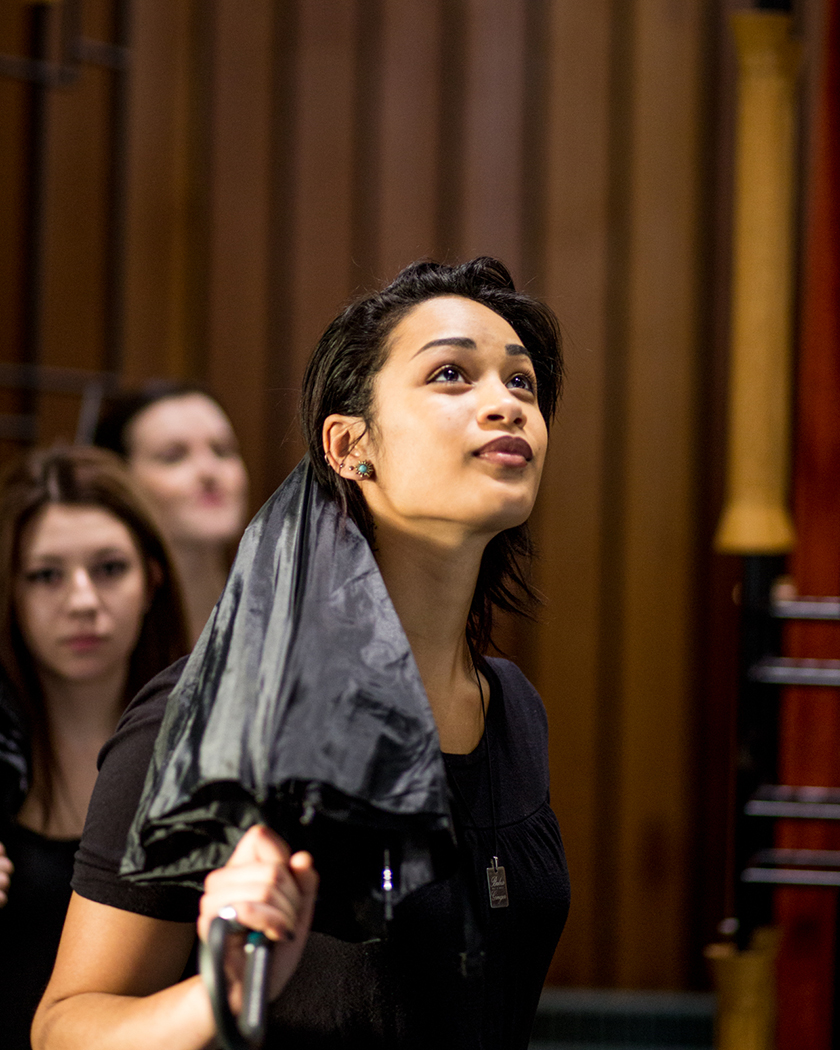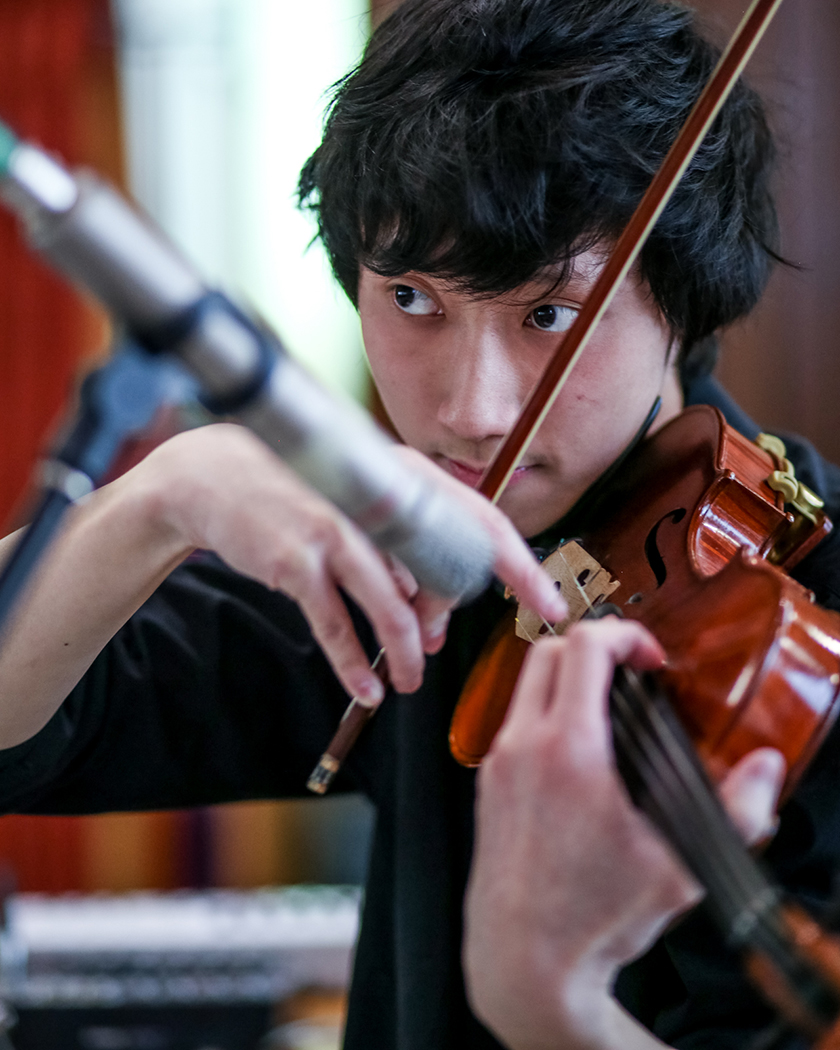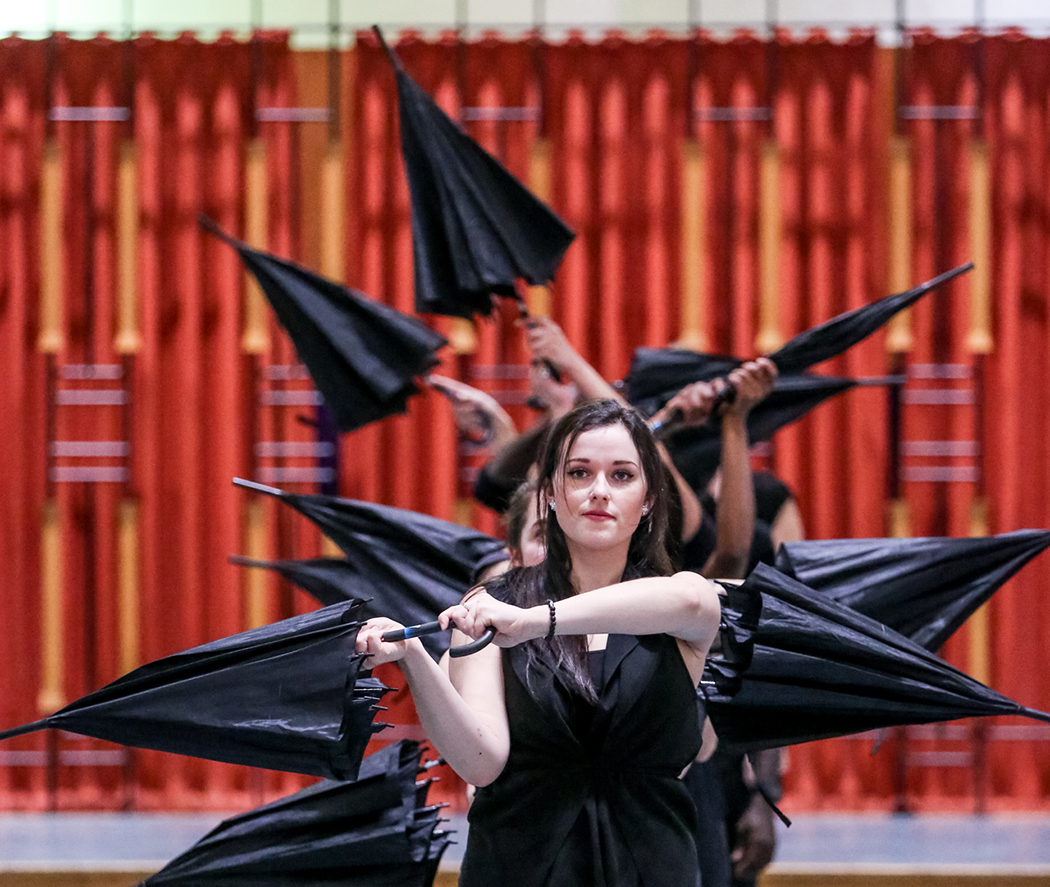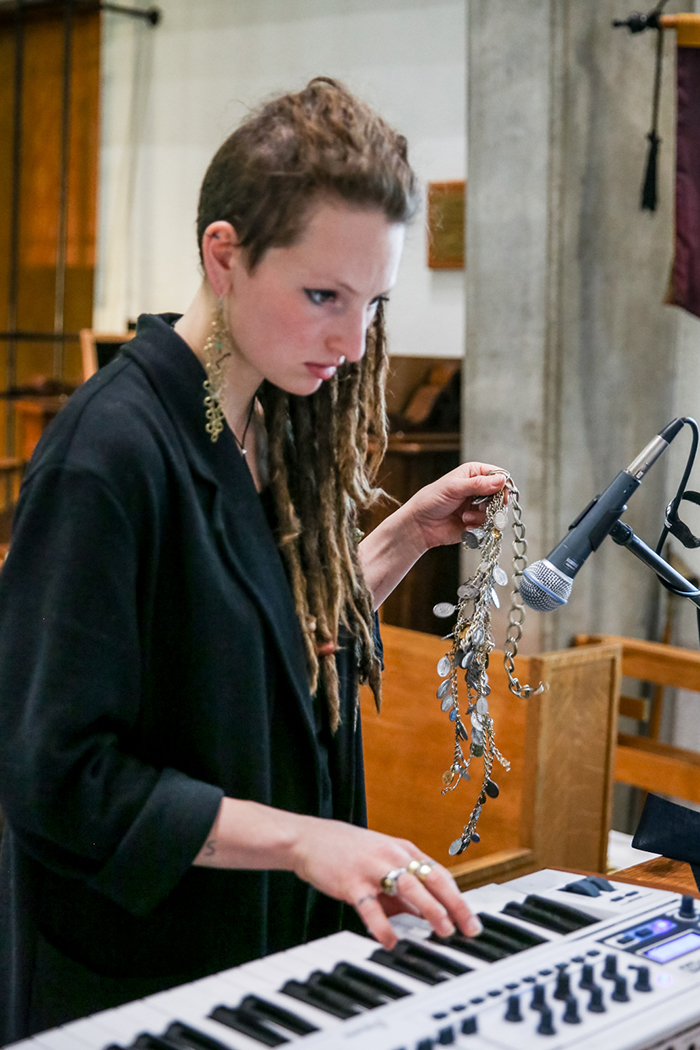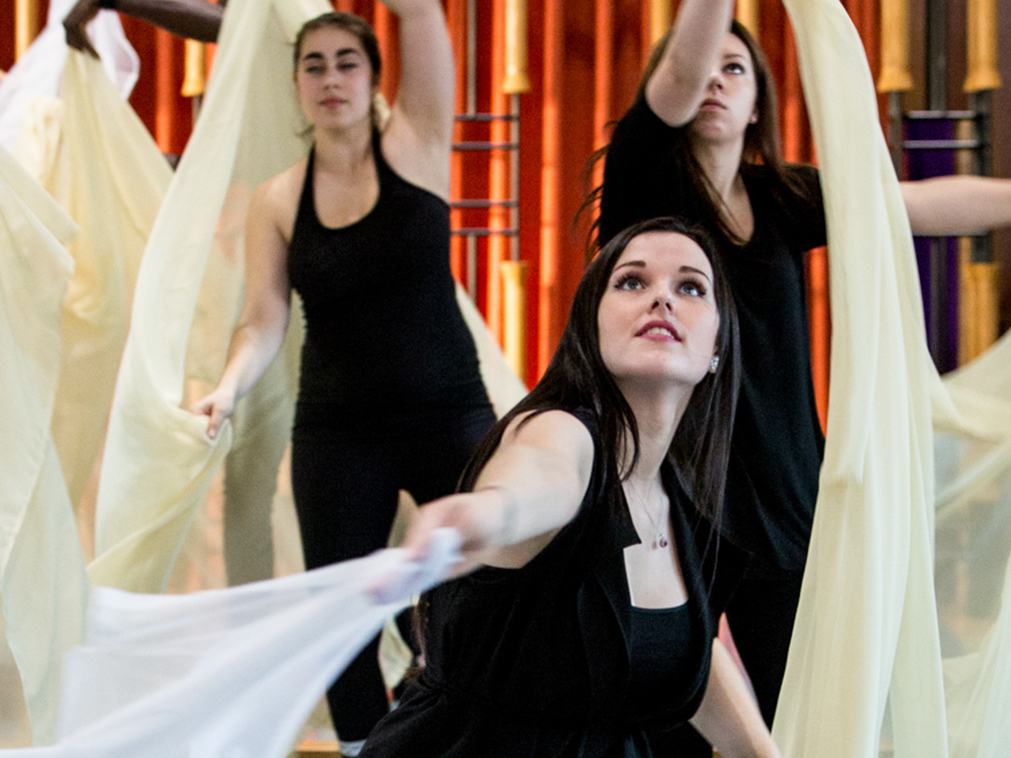
Students perform "Bodies of Water." // Photo by Mike Latschislaw
God can dance
How students from religion and music collaborated on a special interdisciplinary project
Brenda Cantelo dedicates her academic practice to helping students discover “the hidden language of the body,” as the great avant-garde dancer Martha Graham called dance. Not only does Cantelo’s unusual course in the Faculty of Arts’ department of religion, Religion and Dance, explore a history of dance in world religions, but students are also expected to create an expressive, end-of-term project. For many of them, it’s a first foray into dance.
…Students are also expected to create an expressive, end-of-term project. For many of them, it’s a first foray into dance.
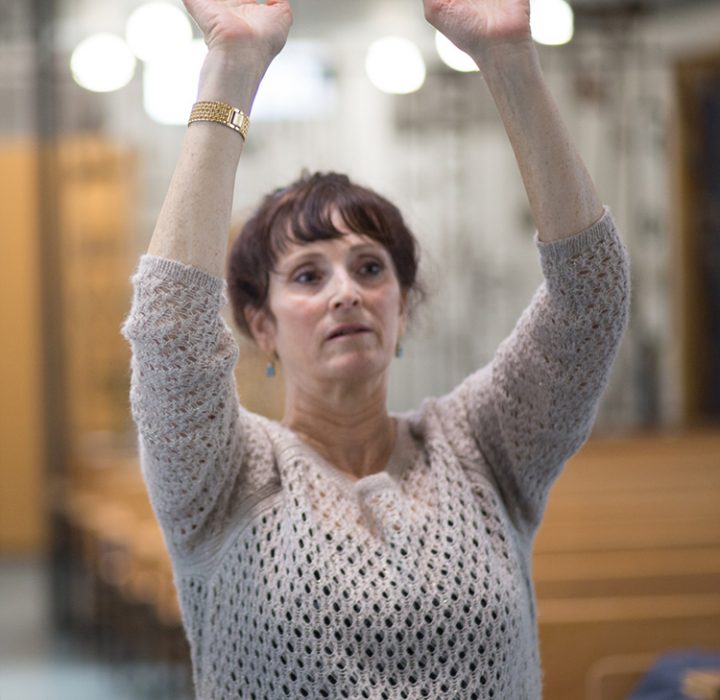
Brenda Cantelo directs “Bodies of Water.”
Dance and religion may not seem to hold much in common at first glance, yet the relation between the two is a productive one, notes Cantelo. She cites dance practitioner and theorist Kimerer LaMothe’s
ongoing investigation of a dialogue between the body and religion through consideration of various sacred texts, historical artists including Graham, Alvin Ailey, Merce Cunningham, Robert Dunn and John Cage, and the ideas of philosophers such as Plato and Friedrich Nietzsche, who declared, somewhat sardonically, “I would believe only in a God that knows how to dance.” (He also called his daily dancing his “divine service.”)
Some religions accept and use dance as a vehicle for the sacred, Cantelo says, and there are some other religions that reject it all together as inappropriate for the sacred.
In the course, she explains, “we look at the curriculum, of dance and world religion, and [students] are thinking about dance and the way in which practitioners could connect movement to higher levels of understanding or expression or spirituality.”
Cantelo took the idea a step further. In the fall of 2015, students from the course had the opportunity to collaborate on an interdisciplinary performance with award-winning local choreographer Stephanie Ballard and students from music professor Gordon Fitzell’s eXperimental Improv Ensemble (XIE) in the Desautels Faculty of Music.
After working together on improvisational exercises and elements such as rhythm, space, sequencing and force, Cantelo’s students shaped their dance performance and entitled it “Bodies of Water.” The narrative of the dance was based on water: life coming out of the water, sailing through happier moments and into the storms of life struggles and ending in death, with dance movements to represent birds skimming the surface of the water and then flying into the sky.
— Mariianne Mays Wiebe
Read the rest of the story in the Spring 2017 issue of Teaching Life online.







